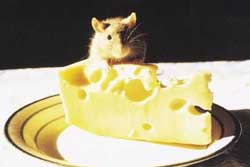Believe it or not … rats can be cute, too
Of all the smaller animals that people keep as pets, rats are among the most intelligent, playful, inquisitive and affectionate. Many people have prejudices against rats as pets, and this opinion is generally based on what they know of wild rats. Yet tame rats or fancy rats are totally different. They are descended from the Norway Rat (Rattus norvegicus), and differ from wild rats in the same way as a spaniel or a pug differs from a wolf.
Domesticated rats have been bred and sold since the 1850s, with the first rat show held in England in 1901. Today there are rat clubs in many countries as rats continue to become more popular as pets. They especially suit people who can’t keep a cat or a dog, yet still want a more personable and intelligent pet than a hamster or a guinea-pig.

|
Rats are bred in a wide variety of colours, including agouti, black, mink, champagne, silver fawn, pearl and cinnamon pearl.
I have been a rat owner for five years now, and for a time was a small-scale breeder. When I watch my rats (shown here) I praise the Creator, and how wonderful He has made each one of these small creatures: their intelligence, their pronounced different personalities (some are leaders, some are shy, some are clowns), their ability to communicate and co-operate, their little forepaws which can be used almost as hands, and their beautiful eyes.
My rats also prove very handy in tidying up scraps of food on the kitchen floor, and, being omnivorous, there are never any wasted left-overs after meal-time.
Pet rats, however, need to be looked after properly when allowed out of their cages (given their liveliness and curiosity it is important for them to be let out regularly). They are prone to gnaw clothes, ledges, furniture, books and wires, and even dig up plants if given half a chance: avoid this by providing empty cardboard boxes and pruned tree branches. The inherent destructive behaviour of rats can be put to good use, by allowing them to shred and make nests from discarded papers that would otherwise have been thrown out.
Susanne Södergren lives in Södertälje, Sweden.


Readers’ comments
Comments are automatically closed 14 days after publication.